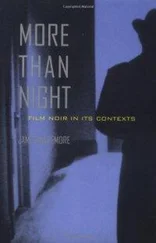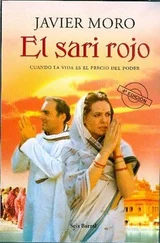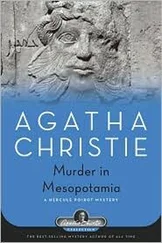Plus, the text of the past can be perceived by the reader of the present in a way that its author did not foresee or conceive it. The reader is an active part in the process of transfer of knowledge, of formulating interpretations, and of extracting his own sensitivity from the text . Hence, the passage of the text from the author to the reader happens, as we started by saying, through a process of conversation and interconnection. Through the text , the self of now dialogues with the self of before .
The same can be said about a cinematographic text . Once created, the work passes from its creator to those who receive and enjoy it, being subjected to their emotions. The film is as much or more of the viewer than of its director and screenwriter. As Burnette-Bletsch remembers “both filmmakers and film-viewers should be recognized as active participants in the interpretive process. In other words, establishing the meaning(s) of a film is not the sole domain of the filmmaker (…) Like the readers of a text, film-viewers are not passive recipients of meanings encoded in a filmic ‘text’ but actively participate in the construction of a film’s meaning.” 10
When it comes to the film on antiquity, reception is everything. James Porter even acknowledges that we take a serious risk in avoiding the importance of reception. After all, “To oppose the obvious fact that the classical past (so called) simply cannot exist without its being received is to live in the protective vacuum of an illusion – the illusion that classical studies and their objects are timeless and eternal, invulnerable to the impingements of history and to contingency.” 11One could also extend this concern to films set in the pre-classical age. In reality, if we consider that Martindale’s Reception Aesthetic was first applied to Classical Studies, and primarily to Linguistics, and that it was followed by other seminal works, such as Lorna Hardwick and Christopher Stray’s A Companion to Classical Receptions (2008), 12also regarding the Greek and Roman worlds, we may say that in its origin it only contemplated a partial fraction of the past. If it is true that the authors of the latter contemplate receptions beyond this universe, highlighting the importance of “interactions with a succession of contexts, both classically and non-classically orientated,” 13it is also a fact that they acknowledge that “Additional volumes would be needed to do justice (…) to the cultures of the ancient near east and their receptions.” 14Thus, it would be fair to state that with regard to a civilization such as Mesopotamia, reception is still taking its first steps. Recently, Garcia-Ventura and Verderame, proposing to contribute to the thickening of Reception Studies on the ancient Near East 15underlined the way in which this cultural quadrant has always been relegated to the background, often considered “a necessary but undeveloped forerunner of Greek culture.” 16As they acknowledge, the ancient Near East has been almost completely ignored by Reception Studies, and only in recent years have scholars such as Bohrer, 17Brusius, 18or Malley 19presented studies on Reception, although starting mainly from an art historical or archaeological perspective. 20
Frederick Nathaniel Bohrer was probably the first to apply the idea that the meaning of the text is not only passively received but actively produced to the study of Mesopotamia’s perceptions (during the nineteenth century). We must therefore ask what exactly is the text, especially concerning a civilization such as Mesopotamia, so harassed by the past, so intriguing and intoxicating that despite its oblivion of centuries has managed to remain in the imagination of the succeeding civilizations and has reached the present day? As Porter admitted, “One of the greatest ironies of classical studies is that they are themselves a form of reception studies.” 21The same might be said regarding Mesopotamian studies. Indeed, when we speak about reception, we need to be aware of the current of different layers of conceptions and receptions that the original historical phenomenon has been subjected to throughout the ages. In this sense, the first part of this book, called “The pre-cinematographic image,” aims to provide a comprehensive guide to the reader, starting in the first interpretations and receptions of Mesopotamian history until the eve of the twentieth century.
In Mesopotamian studies, when one comes in contact with the text, it is already impossible to break the sequence of perceptions and meanings, what Hans Georg Gadamer would call “a continuing chain,” 22that have contributed to its cumulative production process over the centuries. For instance, Luigi Maggi’a La regina di Ninive (1911) is a short film based on Voltaire’s tragedy Sémiramis (1748), which is in turn a creation based on a story presented by the Greek historian and writer Diodorus Siculus, grounded on perceptions of ancient Mesopotamia. Maggi’s text is itself a collection of other texts. The dialogue between writer and reader is thus designed in the stratigraphy of interpretations and interconnections between the sensibilities of the various agents of reception in the longue durée . Reception Theory as a methodology thus allows us to trace the results of these conversations between the text (s) and its reader(s). This aspect is particularly interesting with regard to Mesopotamia because until 1842 there were either no textual evidences or monuments that could speak about the phenomena of the past, there was no material culture to attest to its importance and history, besides a reading , which was a dubious one, based on the ideas of third parties and never on the self (Mesopotamia had no voice). After the takeover of Babylon by the Persians in 539 BC, the destruction of some sectors of the city by Xerxes I, and the successive abandonment of the urbe with the foundation of a new city that would come to steal its protagonism – Seleucia – Mesopotamia sank. These events subjected the ancient land between the rivers to a sepulchral silence until its rediscovery by archaeology in 1842. If it were not for the Greeks and the Old Testament, we would not even have known about it. Thus, as Hardwick said “Reception within antiquity is as important mediating factor” 23between ancient near eastern and modern cultures.
Mesopotamia has since then been received over the years, “transmitted, translated, excerpted, interpreted, rewritten, re-imaged and represented.” 24Although Martindale originally acknowledges that this broad process of reception could encompass, in his words “writing about Paradise Lost , or the mythological poesie of Titian, or the film Gladiator , or the iconography of fascism,” 25he also attributed different values to these different texts, distinguishing the “material of high quality” from the “banal or the quotidian.” 26He feared that “we may end by trivializing reception within the discipline; already a classics student is far more likely to spend time analysing Gladiator than the Commedia of Dante.” 27For his position he was criticized by other reception theorists such as Tim Rood, who, on the contrary, claims that “A film that one might regard as in some ways ‘bad’ can still help one engage with antiquity: thus Gladiator, like Spartacus before it, is part of a story about the reception both of gladiatorial combat and of ancient representation of violence,” the film and its contemporary reception matter. 28
After all, as Staiger claimed “The job of a reception historian is to account for events of interpretation and affective experience,” and the film fits well within this logic. 29Reception through a medium like cinema should consider the results from both psychological and sociological factors that cannot be isolated. 30On the other hand, what matters is not only the immediate relationship of the viewer with the film projected on the screen, but also, and above all, the relationship that lasts after the first has left the cinema room (a relationship that could be extended not only through cognitive memory but also through different vehicles that adorned the film, the stories and its stars, such as magazines and cinema literature). 31For Pierre Sorlin, the analysis of an historical film would have two possible paths for a historian: first, to understand how the contemporary audience saw itself through the representation of the past; and second, to study the way history and its conscience were transmitted and perceived in the modern world. 32After all, “all films move forward to the present and ‘back to the future’ when they re-present the past.” 33The way the past is felt in the present , as well as the way the present sees the past, thus become two insurmountable topics of exceptional importance for the study that we present here. In sum, we cannot understand the past narrated in an historical film without understanding the sensibilities inherent to the society that produced it. Film mutates into much more than a piece of art or even an ideological tool; it transforms itself into a product of social and cultural meaning “triggering audience’s imagination.” 34
Читать дальше












